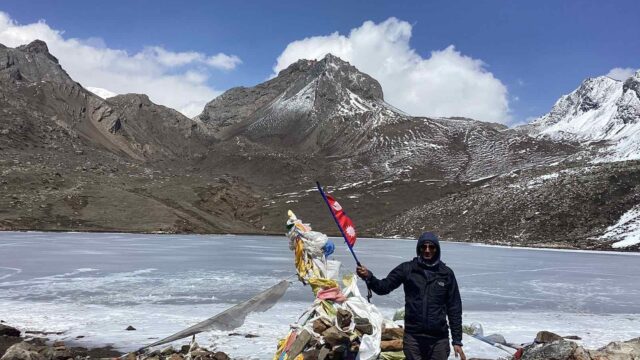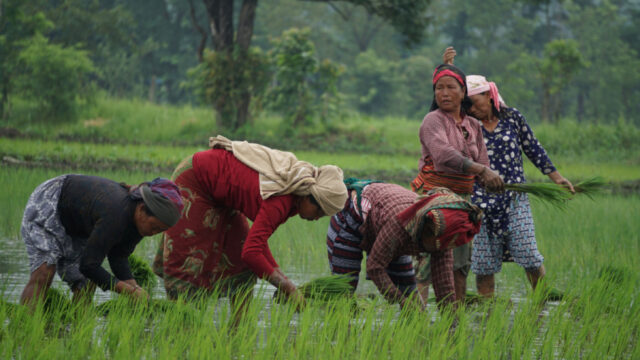Nepal, a land of breathtaking landscapes and rich cultural heritage, is increasingly focusing on sustainable tourism practices to preserve its natural and cultural resources for future generations. The nation recognizes that tourism is a significant contributor to its economy, but it also understands the need to balance economic benefits with environmental and social responsibilities. Here, we explore the various initiatives and strategies Nepal is employing to promote sustainable tourism practices.
The Nepalese government has been proactive in formulating policies and regulations aimed at promoting sustainable tourism. The Ministry of Culture, Tourism, and Civil Aviation (MoCTCA) has introduced the Sustainable Tourism Development Policy, which emphasizes eco-friendly practices, community participation, and the conservation of natural and cultural heritage. This policy aims to integrate sustainability into all aspects of tourism development and management.
The government has established protected areas, national parks, and conservation areas to safeguard biodiversity and ecosystems. For instance, the Annapurna Conservation Area Project (ACAP) is a pioneering initiative that focuses on community-based conservation, promoting eco-tourism while ensuring that local communities benefit economically.
Community-based tourism (CBT) is a cornerstone of Nepal’s sustainable tourism strategy. This approach involves local communities in tourism planning and management, ensuring that they reap the benefits of tourism while preserving their cultural and environmental heritage. CBT initiatives empower communities, providing them with training and resources to host tourists sustainably.
One notable example is the Ghale Gaun homestay program in the Lamjung district. This initiative allows visitors to stay with local families, and experience traditional Gurung culture and lifestyle. The program has not only enhanced the livelihoods of the local population but also fostered cultural exchange and mutual respect between tourists and hosts.
Eco-tourism is gaining momentum in Nepal as a means to promote sustainable travel experiences. This form of tourism emphasizes minimal impact on the environment, conservation of natural resources, and support for local communities. Trekking routes such as the Annapurna Circuit and the Everest Base Camp trek are popular eco-tourism destinations, where efforts are made to reduce waste, conserve water, and protect fragile ecosystems.
Organizations like the Nepal Eco-Tourism Association (NETA) are actively involved in promoting eco-tourism practices. NETA collaborates with tour operators, guides, and local communities to implement sustainable practices such as waste management, energy conservation, and the use of eco-friendly products.
Nepal is home to diverse flora and fauna, including endangered species like the Bengal tiger, one-horned rhinoceros, and snow leopard. To protect its wildlife and habitats, Nepal has established a network of national parks and wildlife reserves. Chitwan National Park and Bardiya National Park are exemplary models of successful conservation efforts, attracting eco-tourists from around the world.
These parks engage in wildlife conservation programs, anti-poaching measures, and community outreach initiatives. Tourism revenue generated from park entry fees and eco-tourism activities is reinvested into conservation projects, ensuring the long-term sustainability of these natural treasures.
Nepal’s rugged terrain and majestic peaks attract thousands of trekkers and mountaineers each year. To mitigate the environmental impact of trekking and mountaineering activities, the government and various organizations have implemented responsible tourism practices. The Nepal Mountaineering Association (NMA) and the Trekking Agencies Association of Nepal (TAAN) play pivotal roles in promoting responsible trekking and climbing.
Measures include regulating the number of permits issued for popular trekking routes, promoting Leave No Trace principles, and educating trekkers about the importance of environmental stewardship. Additionally, clean-up campaigns and waste management systems are in place on major trekking routes to minimize pollution and preserve the pristine beauty of the Himalayas.
The adoption of renewable energy sources and green practices is crucial for sustainable tourism. Many hotels, lodges, and tea houses in Nepal are now incorporating solar power, biogas, and energy-efficient technologies to reduce their carbon footprint. Solar water heaters and photovoltaic panels are becoming common features, particularly in remote areas where access to electricity is limited.
Eco-friendly accommodations are gaining popularity among environmentally-conscious travelers. These establishments prioritize sustainability by using locally sourced materials, reducing water consumption, and implementing recycling programs. The use of organic produce and support for local artisans also contribute to the local economy and reduce environmental impact.
Education and awareness are vital components of promoting sustainable tourism. Various non-governmental organizations (NGOs), community groups, and tourism associations are actively involved in raising awareness about sustainable practices among tourists, businesses, and local communities. Workshops, training sessions, and awareness campaigns are conducted regularly to disseminate knowledge about the importance of sustainability in tourism.
The Kathmandu Environmental Education Project (KEEP) offers programs that educate trekkers and guides about responsible trekking practices, waste management, and the conservation of natural resources. By fostering a culture of sustainability, these initiatives encourage all stakeholders to take an active role in preserving Nepal’s unique environment and heritage.
While Nepal has made significant strides in promoting sustainable tourism, several challenges remain. Inadequate infrastructure, lack of enforcement of regulations, and the need for greater investment in sustainable practices are some of the issues that need to be addressed. Additionally, the COVID-19 pandemic has had a profound impact on the tourism industry, necessitating a focus on resilience and recovery.
To overcome these challenges, it is essential to strengthen partnerships between the government, private sector, and local communities. Increased funding for sustainable tourism projects, improved infrastructure, and robust monitoring mechanisms are crucial for ensuring long-term sustainability. Furthermore, promoting domestic tourism and diversifying tourism products can reduce the pressure on popular destinations and distribute the benefits more evenly.
Nepal’s commitment to promoting sustainable tourism practices is evident through its policies, community initiatives, and conservation efforts. By embracing eco-tourism, community-based tourism, and responsible trekking, Nepal is setting a positive example for other countries. The focus on education, renewable energy, and green practices further underscores the nation’s dedication to preserving its natural and cultural heritage.
As Nepal continues to navigate the challenges and opportunities in sustainable tourism, its efforts will play a vital role in ensuring that future generations can experience the unparalleled beauty and diversity of this Himalayan paradise.
Article By: Ranjana Adhikari






